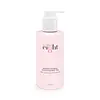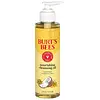What's inside
What's inside
 Key Ingredients
Key Ingredients

 Benefits
Benefits

 Concerns
Concerns

No concerns
 Ingredients Side-by-side
Ingredients Side-by-side

Zea Mays Germ Oil
EmollientSorbeth-30 Tetraoleate
EmulsifyingCaprylic/Capric Triglyceride
Masking1,2-Hexanediol
Skin ConditioningPentaerythrityl Tetra-Di-T-Butyl Hydroxyhydrocinnamate
AntioxidantArgania Spinosa Kernel Oil
EmollientCamellia Japonica Seed Oil
EmollientCamellia Sinensis Seed Oil
HumectantHelianthus Annuus Seed Oil
EmollientMacadamia Integrifolia Seed Oil
Skin ConditioningSimmondsia Chinensis Seed Oil
EmollientOlea Europaea Fruit Oil
MaskingMonascus Extract
Skin ConditioningWater
Skin ConditioningNiacinamide
SmoothingSodium Hyaluronate
HumectantOenothera Biennis Flower Extract
AstringentPropanediol
SolventSaccharomyces/Rice Ferment Filtrate
Skin ConditioningZea Mays Germ Oil, Sorbeth-30 Tetraoleate, Caprylic/Capric Triglyceride, 1,2-Hexanediol, Pentaerythrityl Tetra-Di-T-Butyl Hydroxyhydrocinnamate, Argania Spinosa Kernel Oil, Camellia Japonica Seed Oil, Camellia Sinensis Seed Oil, Helianthus Annuus Seed Oil, Macadamia Integrifolia Seed Oil, Simmondsia Chinensis Seed Oil, Olea Europaea Fruit Oil, Monascus Extract, Water, Niacinamide, Sodium Hyaluronate, Oenothera Biennis Flower Extract, Propanediol, Saccharomyces/Rice Ferment Filtrate
Ingredients Explained
These ingredients are found in both products.
Ingredients higher up in an ingredient list are typically present in a larger amount.
You may know this ingredient as argan oil. Argan Oil has antioxidant, hydrating, and soothing properties.
Studies have shown argan oil can help fight again radical damage from the sun. This makes it effective at preventing hyperpigmentation.
Large amounts of vitamin E found in argan oil helps the skin retain water. Argan oil also contains fatty acids such as linoleic acid, oleic acid, and palmitic acid. It is also a good source of lipids.
Another benefit of argan oil is skin-soothing. It can help reduce inflammation-related skin symptoms.
Argan Oil is effective at regulating sebum production in pores. This can make it effective at treating hormonal acne.
Traditionally, argan oil was used for its antibacterial and antifungal properties. However, argan oil contains fatty acids that may make it not fungal-acne safe.
Argan Trees are native to Morocco.
Learn more about Argania Spinosa Kernel OilThis ingredient is an emollient, solvent, and texture enhancer. It is considered a skin-softener by helping the skin prevent moisture loss.
It helps thicken a product's formula and makes it easier to spread by dissolving clumping compounds.
Caprylic Triglyceride is made by combining glycerin with coconut oil, forming a clear liquid.
While there is an assumption Caprylic Triglyceride can clog pores due to it being derived from coconut oil, there is no research supporting this.
Learn more about Caprylic/Capric TriglycerideHelianthus Annuus Seed Oil is the oil derived from the seeds of a Sunflower. Sunflower seed oil is non-fragrant. It is an emollient, meaning it helps to soften the skin.
Sunflower seed oil contains many fatty acids. The fatty acids found in sunflower seeds include (from highest amount to least): linoleic acid, myristic acid, palmitic acid, stearic acid, arachidic acid, oleic acid, and linolenic acid.
These fatty acids help the skin create ceramides. Ceramides play a role in repairing the skin barrier.
Helianthus Annuus Seed Oil helps moisturize the skin. This in turn helps the skin look more rejuvenated and smoother.
Sunflowers are rich in vitamin E.
Historians believe Indigenous cultures of North America domesticated sunflowers before corn. Thus they relied on sunflower oil for a variety of uses. One such use is moisturizing skin and hair.
Sunflower seed oil may not be fungal acne safe. We recommend speaking with a professional if you have any concerns.
Learn more about Helianthus Annuus Seed Oil